I never read Maurice Sendak’s books as a child; we were a Richard Scarry household:
I recall seeing the Wild Things and some images from In the Night Kitchen, but that’s about it. I enjoyed Spike Jonze’s move adaptation of Where the Wild Things Are, and I was glad to learn that it had Sendak’s blessing. What drew me to him were the interviews he gave and the documentary about him in his last years, that showed him as an unapologetic artist and something of a curmudgeon; openly gay, proudly Jewish, and as masculine and fierce as one of his Wild Things. They were modeled on his relatives, as seen by him as a child, so of course he aged into one.
I bought a book of an exhibition of his art with essays, Wild Things Are Happening, and as I read it, I felt compelled to read all of his books. I spent the last month reading everything that I could get my hands on. My favorite so far is Outside Over There, which makes a trilogy with In the Night Kitchen and Where the Wild Things Are. It’s about an older girl who’s baby sister is taken by goblins while she’s watching her, and how she gets her back. It was an inspiration for Jim Henson’s Labyrinth and features some of Sendak’s most beautiful and detailed art; he had such range, and referenced many classic paintings in his work.
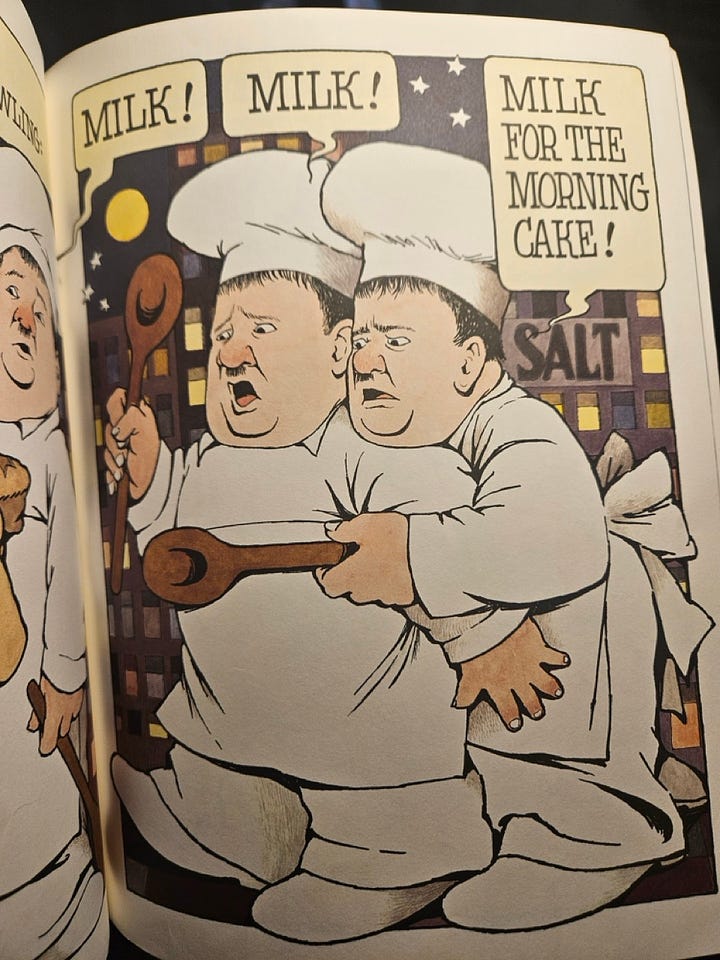
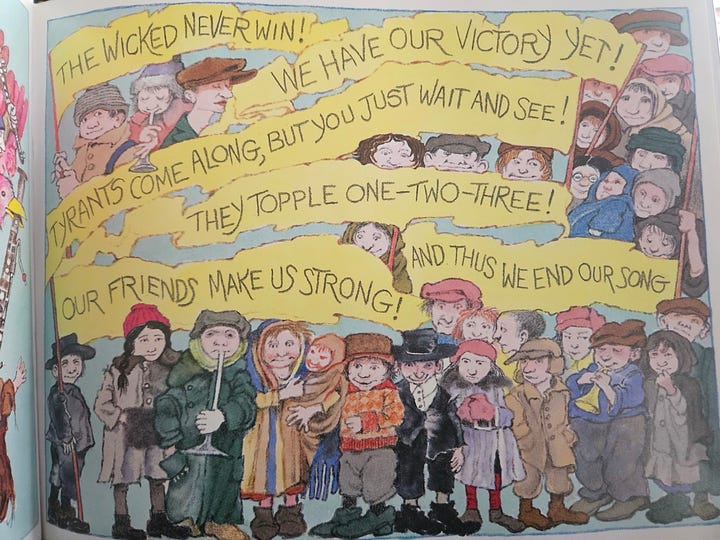
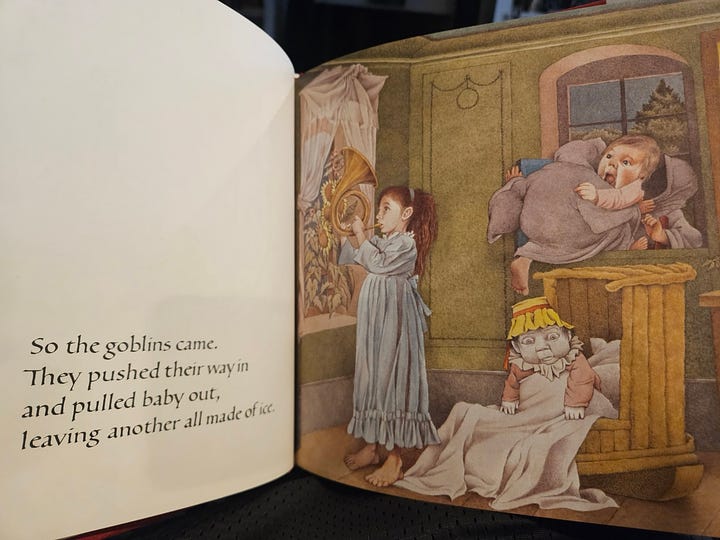
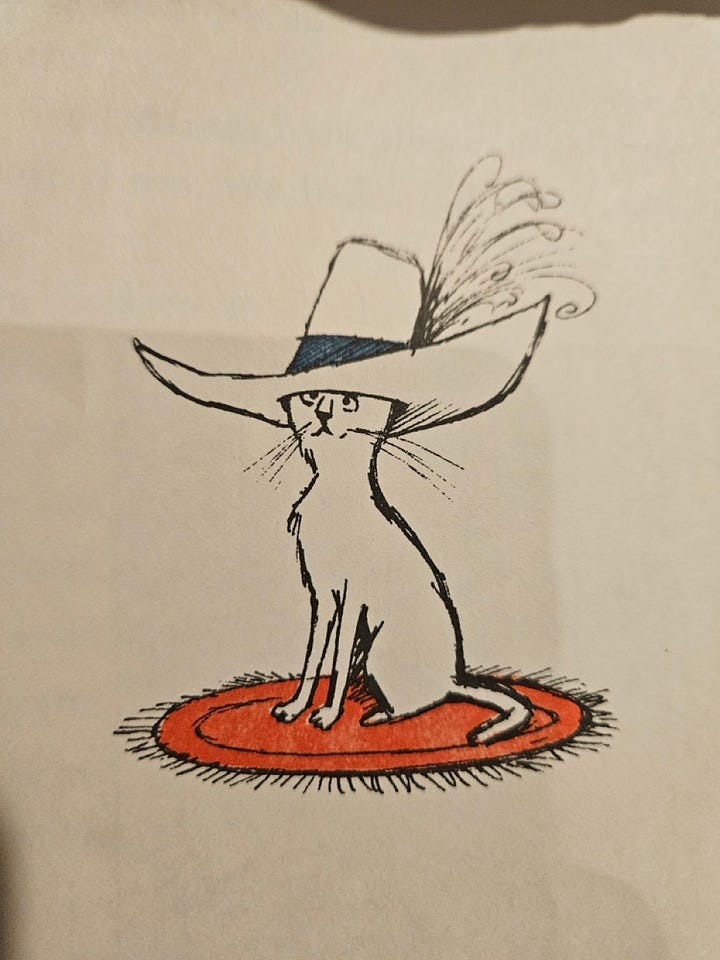
What amazed me was that he’s done so much more than what he’s best known for. He adapted his book, The Sign on Rosie’s Door, about a young girl who likes to wear her mom’s dress and shoes and put on shows, into a musical and cartoon TV movie with songs written by Carole King! The album Really Rosie is still in print, and you can watch the cartoon online. It’s wonderful, and you’ll recognize characters from other books, like the gator fam from Alligators All Around.
He designed sets for the opera The Cunning Little Vixen, and illustrated the book on which it as based; he illustrated the shtetl children’s story, Brundibar, that Tony Kushner adapted into an opera; he designed sets for Mozart’s The Magic Flute, as well. I haven’t read all his books, but I managed to find most of them; I’m still waiting on Higgledy-piggledy-pop and Kenny’s Window from the library.
His last was My Brother’s Book, which feels like William Blake in both its poetry and art. I am most surprised that Outside Over There seems mostly forgotten, and also We Are All Down in the Dumps with Jack and Guy, about homeless children in New York City surrounded by an enormity of wealth. Outside Over There is a fairy tale beautifully illustrated, about a girl learning responsibility; Jack and Guy is unapologetically a message book that shoves our faces into the absurd squalor we tolerate in a country of obscenely undertaxed wealth.
You can watch the documentary on Sendak, Tell Them Anything You Want, on many streaming services, including Hoopla and Kanopy, which let you borrow it for free with a library card (if your library participates.)
I’ve also started reading Superman comics. I read comics after they’re collected into graphic novels or anthologies; I tend to favor one-shots and mini-series that are considered “outside canon” or alternative from the long-running comics and their timelines. Superman For All Seasons, which was the basis for the TV series Smallville, is a wonderful read that requires little canonical knowledge of the character, and focuses of what makes this near-invulnerable alien relatable: like us, he can’t defy death when it comes to his loved ones, and he can’t save everyone. And he knows it.
I haven’t read Whatever Happened to the Man of Tomorrow? in many years, but I remember enough to recommend it highly, for the same reasons. The series I’ve read most recently is All-Star Superman, written by Grant Morrison. It ties in characters from all over the Superman universe; in this one, Lex Luthor has finally killed him, but his death will take a while. And he has a lot of work to do before it happens. What makes Superman work for me is his basic decency, and near-immunity to abusing his powers. He is not some unattainable paragon of virtue; he has to make tough decisions, and agonizes over them, and makes mistakes for which he pays penance. To be intentionally blasphemous, he’s a response to an omniscient and omnipotent God who allows suffering to exist, personified in a being we can still relate to.
While he was created by two Jewish guys giving the finger to Hitler, the modern incarnation of a powerful alien who was raised by a good childless couple and thus has an infallible character, is a bit much. I’ve lived in the Midwest, and while they are no worse than any other region of the United States, it is easy to believe that they think if they raised a super-powerful alien, he would turn out even more perfect than Superman. (Their version wouldn’t live in Metropolis with them snooty types, doncha know.) I like the stories because it is not easy to do the right thing, you usually end up sacrificing something when you do, and there’s rarely a Jimmy Olson or Lois Lane there to tell you how great you are. Most of the time, no one knows it but yourself, and that has to be enough. It won’t make you Superman, Supergirl, or even Krypto. But in your Fortress of Solutide, you’ll know that you could have been a piece of shit, and you weren’t.
My introduction to Superman was the 1978 film starring Christopher Reeve, which remains my favorite incarnation of the character. There is an upcoming documentary on his life called Super/Man: The Christopher Reeve Story, which will hurt to watch, but I still look forward to it. He died too soon, but he helped a lot of people when he could have just helped himself.
I always appreciated him as an actor, and wished he’d had more opportunities. He had range, but was never given much chance to use it. He was wonderful as the romantic obsessive in the lovely adaptation of Richard Matheson’s otherwise creepy novel Somewhere in Time; only Reeve could take a time-traveling stalker and make him seem affable and charming! He was funny in Noises Off… and I wish he’d had a chance to play slapstick in a screwball comedy. And he could do villains, too: he did a good job in Street Smart as a sleazy reporter, and he was brilliant in Sidney Lumet’s adaptation of Ira Levin’s play, Deathtrap. I’ll let you read Ray Banks’s excellent essay on that and Sleuth, to hear more about that:
If you are craving nature, it seems like the Eastern Fence Lizards are out. I hadn’t seen any all summer, but they were all over the trails today. This one let me take a few photos before hiding in the log. The other photos are the FAA Radar Station near the quarry where I like to birdwatch, and a Carolina Mantis hunting on a garbage can lid.







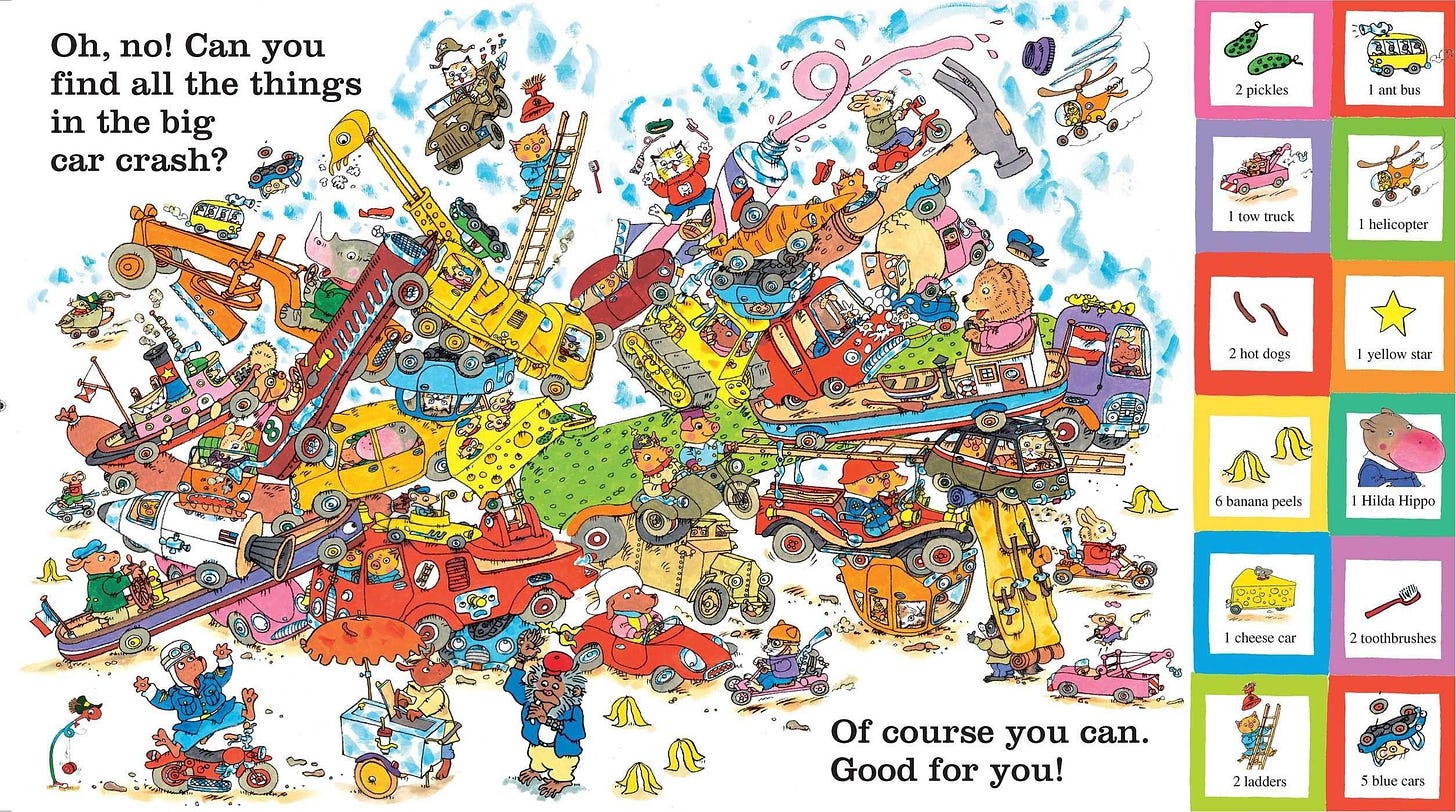

I love Sendak! And the lizards! 🦎❤️
Have you watched Homelander at all? I’m about a season in. Curious what you think of the dystopian Superman.
Do you know Jacques TARDI. May I recommend if you don’t. Remarkable illustrator / creator of French BDs (bandes dessineés). Has 'comiced' some of great noiristes: https://www.futuropolis.fr/9782754821209/l-integrale.html. Also his three-vol ‘Putain de Guerre’ (World War I through Fr. eyes). And much more, often translated.